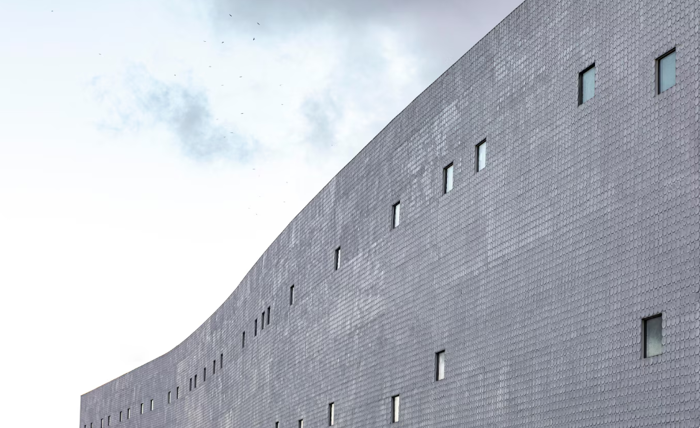Modern construction methods are in a constant state of evolution, with new technologies and materials offering improved efficiency, sustainability, and durability. Within this innovative framework, Precast Concrete Walls have emerged as a leading solution for a myriad of construction requirements. Offering numerous benefits over traditional construction methods, precast concrete has revolutionised the manner in which structures are conceived and assembled.
Enhanced Efficiency in Construction Process
One of the most profound advantages of precast concrete walls is the efficiency they bring to the construction process. Unlike traditional cast-in-place concrete, precast panels are manufactured off-site in a controlled environment. This means that they are not as dependent on weather conditions, which allows for year-round production and assembly. As a result, building projects can proceed on schedule, without delays caused by inclement weather, which can significantly reduce overall construction timeframes and associated costs.
Superior Quality Control
In the environment of a precast facility, strict quality control measures are maintained throughout the production process. From the initial design stages to the final curing, every step is monitored to ensure that the walls meet or exceed industry standards. This leads to high levels of consistency and uniformity that are difficult to achieve on a building site where factors such as temperature, humidity, and workmanship can vary widely.
Durability and Longevity
When it comes to the lifespan of building materials, precast concrete is unparalleled. Its inherent resistance to fire, pests, mould, and inclement weather stands out in comparison to wood or metal framed structures. This durability ensures that precast concrete structures remain sound and maintain their aesthetic appeal for decades, reducing the need for frequent repairs or rebuilds and thus offering long-term cost savings.
Enhanced Structural Integrity
Precast walls offer exceptional structural integrity. The precasting process includes creating a reinforced concrete product that is strong and stable under various loads. This makes precast concrete a reliable choice for a wide range of applications, from residential buildings to large infrastructural projects such as bridges and retaining walls.
Thermal Efficiency
Thermal efficiency is another factor where precast concrete walls excel. The material’s massiveness allows it to absorb and store heat, making for a more constant internal temperature regardless of external weather conditions. This thermal mass can lead to reduced heating and cooling costs, contributing to the overall energy efficiency of buildings and aiding in the demand for greener constructions.
Acoustic Performance
Noise reduction is an increasingly sought-after feature in urban environments, and precast walls effectively dampen sound transmission. Their dense structure can provide high levels of acoustic insulation, which is particularly beneficial in multi-dwelling developments or buildings situated in noisy areas such as near airports or busy roads.
Reduced Jobsite Impact and Environmental Advantages
An often-overlooked aspect of using precast concrete walls is their ability to minimise the environmental impact on the construction site. Since panels are produced off-site, there is a notable reduction in onsite waste, dust, noise, and overall disruption. This approach aligns well with sustainable construction practices and can help construction projects attain higher green building certification ratings.
Design Flexibility and Aesthetics
Despite their structural robustness, precast concrete walls offer significant design flexibility. Advances in formwork technology mean that precast panels can be crafted into virtually any shape, texture, or colour. This allows architects and designers to explore creative design options without sacrificing strength or durability. The ability to mimic other materials, such as natural stone or brick, further expands the design possibilities.
Fire Resistance
Fire resistance is critical in building design, and precast concrete walls provide exceptional protection. Concrete’s non-combustible nature ensures that it does not contribute to the spread of fire, and it can resist high temperatures for extended periods. This characteristic can save lives and safeguard property, making precast concrete an excellent choice from a safety standpoint.
Speed of Erection on Site
The speed with which precast panels can be erected on the construction site is another benefit. Once the foundation and supports are ready, the precast concrete walls can be quickly lifted into place and secured. This rapid installation not only accelerates the construction schedule but also reduces labour costs involved with the erection of the structure.
Reduced Long-term Maintenance
Long-term maintenance demands are notably diminished with precast concrete walls. Their inherent strength and resistance to common damages significantly reduce the maintenance needed to keep them in optimal condition. Lower maintenance costs across the lifespan of the building contribute to the overall cost-effectiveness of this building solution.
Seismic Performance
In regions prone to seismic activity, the resilience of construction materials is of paramount importance. Precast concrete can be engineered to withstand substantial seismic forces, offering increased safety and structural integrity in earthquake-prone areas. This capability is achieved through careful design and by integrating features like post-tensioning or specialised connection systems.
Compliance with Modern Building Codes
Compliance with modern building codes is a complex and ever-evolving challenge. The use of precast concrete walls streamlines this aspect, as these elements are often designed to meet or exceed current standards for energy efficiency, safety, and performance. Given their versatility and compliance, precast walls are a suitable choice for nearly any project.
Conclusion
Precast concrete walls are a testament to the advancement of construction technology, providing a wealth of advantages that make them an attractive option for modern builders. Efficiency, quality, durability, and design flexibility are among the benefits that have enabled precast concrete to become a staple in the construction industry. The tangible improvements it delivers in project timelines, environmental impact, and building performance cement its role as an essential component in the development of sustainable, long-lasting structures.
Considering all the foregoing benefits, it is clear why Precast Concrete Walls have become an integral part of contemporary construction practices. As more industry professionals adopt this innovative solution, it is poised to continue leading the way in shaping the built environment of the future.


